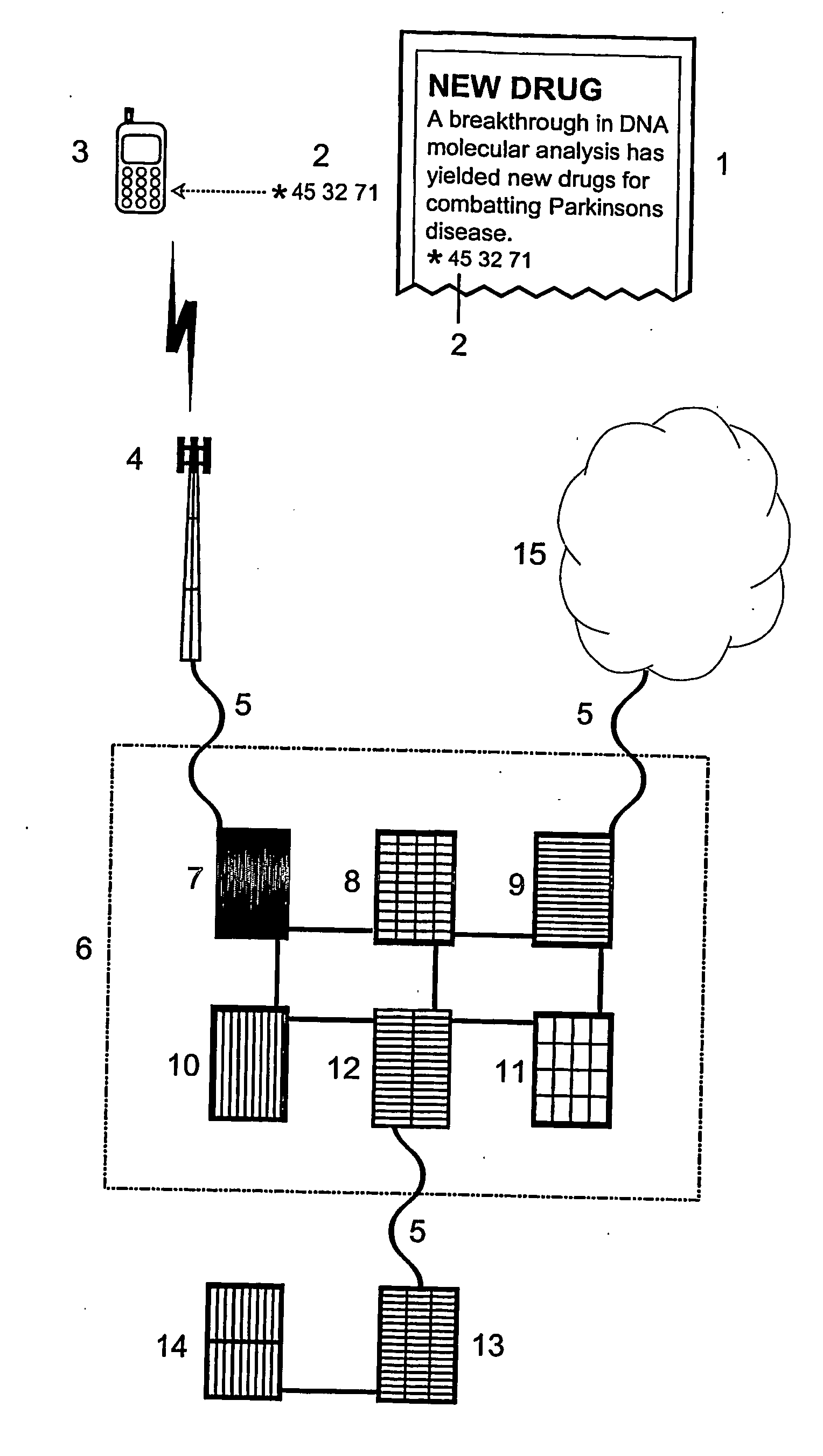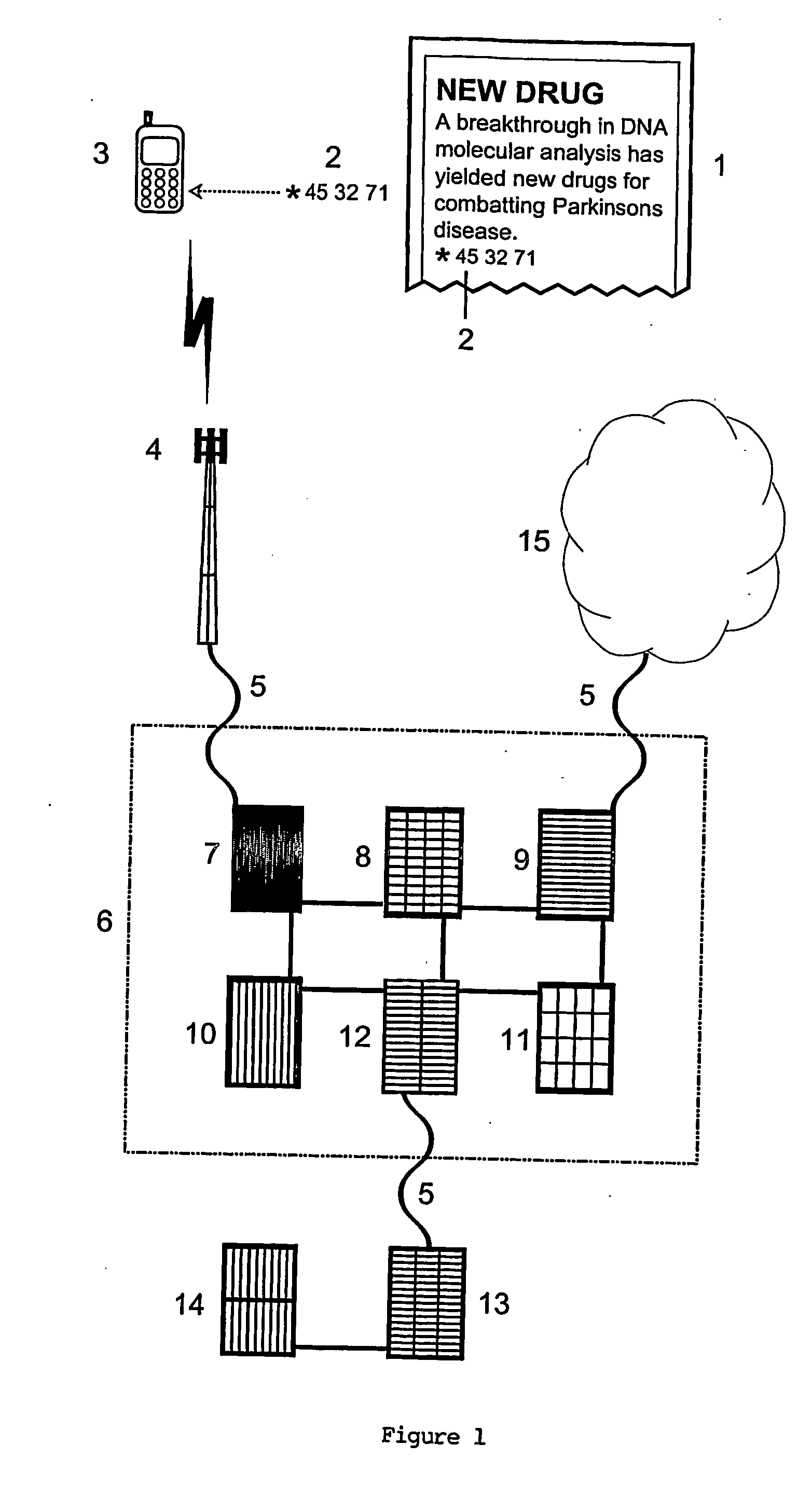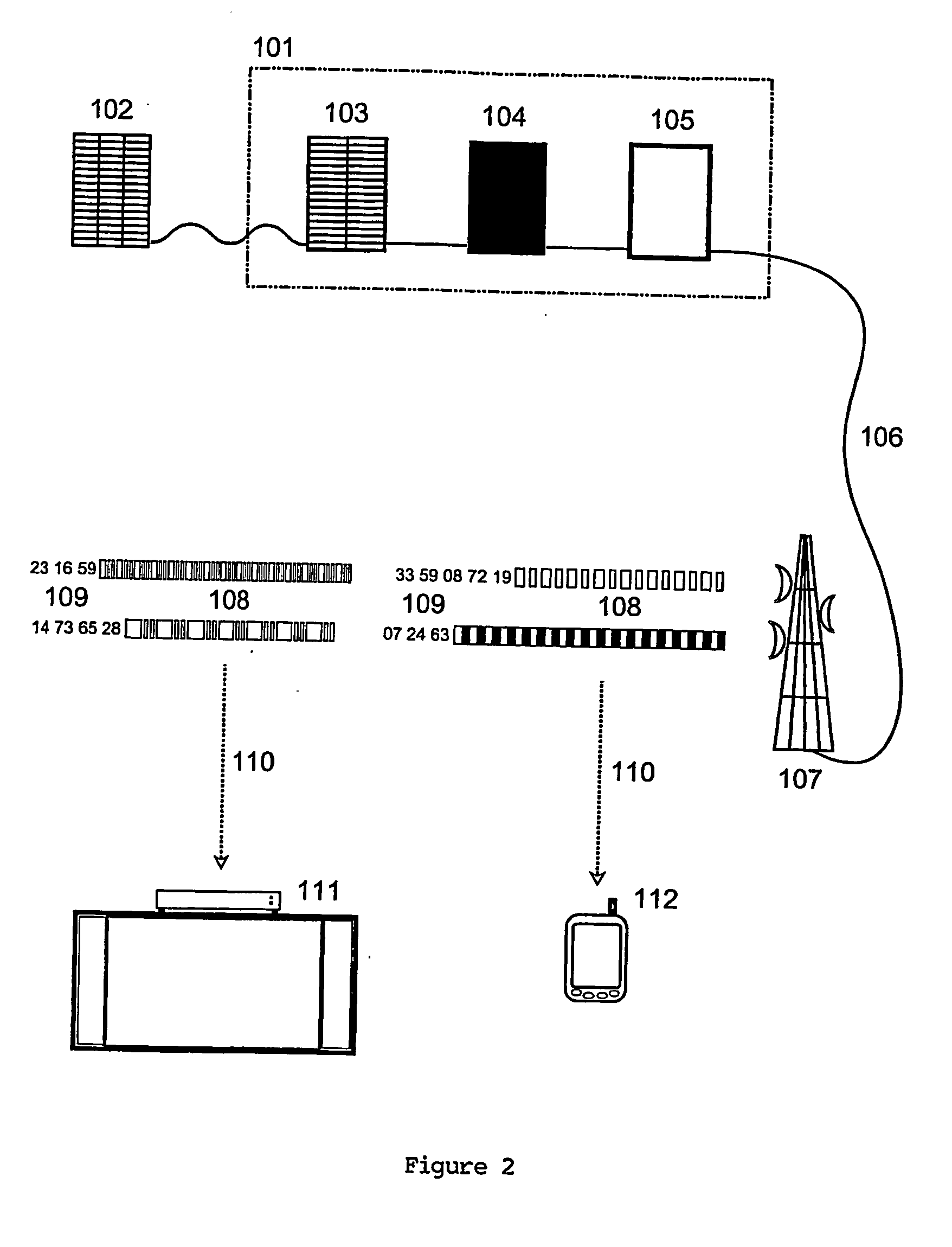System and method using alphanumeric codes for the identification, description, classification and encoding of information
a technology of information identification and alphanumeric codes, applied in the field of accessing information, can solve the problems of not providing full internet access, comparatively limited range of information available through alternative methods, and difficulty in typing web site addresses using alternative methods, so as to achieve less error-prone, contextually accurate, and fast
- Summary
- Abstract
- Description
- Claims
- Application Information
AI Technical Summary
Benefits of technology
Problems solved by technology
Method used
Image
Examples
Embodiment Construction
Overview
[0066] According to this invention, there is a system and method for the analysis, identification, description and classification of information. Information is defined and classified into Subject Terms, and each Subject Term is encoded with an Alphanumeric Value, for the purpose of encoding said information.
[0067] A methodology is used for defining and structuring information, whereby information is defined using Subject Terms. Said Subject Terms are similar to key words, except that they are language independent, and may encapsulate multiple variations of a word.
[0068] Each Subject Term provides a short definition or description of either a constituent part or the whole of the information. Therefore, a summary or profile of the information may be encapsulated in one or more Subject Terms, that when collated provide a concise description of said information or data—essentially creating a succinct profile of the information or data. When collated, the sequence of Subject...
PUM
 Login to View More
Login to View More Abstract
Description
Claims
Application Information
 Login to View More
Login to View More - R&D
- Intellectual Property
- Life Sciences
- Materials
- Tech Scout
- Unparalleled Data Quality
- Higher Quality Content
- 60% Fewer Hallucinations
Browse by: Latest US Patents, China's latest patents, Technical Efficacy Thesaurus, Application Domain, Technology Topic, Popular Technical Reports.
© 2025 PatSnap. All rights reserved.Legal|Privacy policy|Modern Slavery Act Transparency Statement|Sitemap|About US| Contact US: help@patsnap.com



